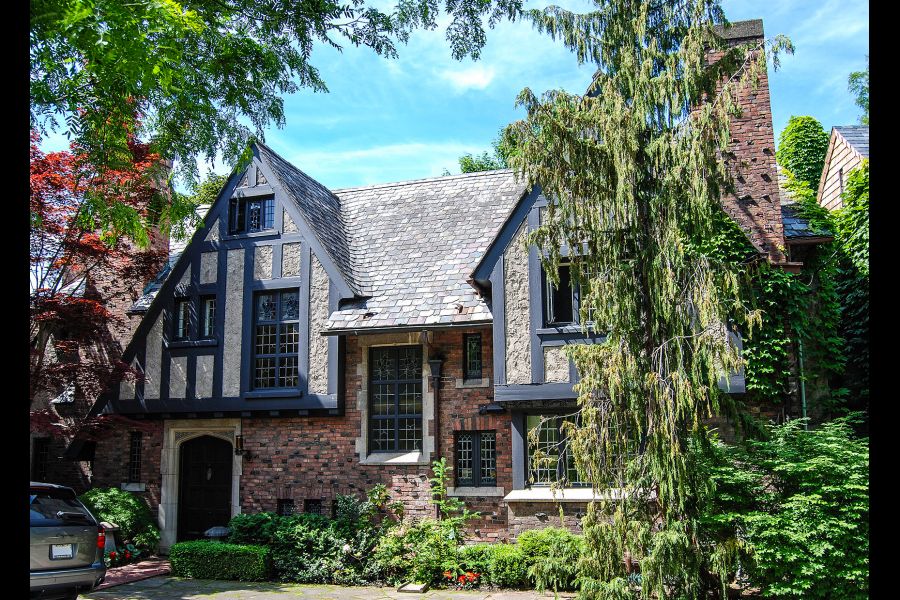When an Arts & Crafts house is mentioned in North America one thinks of Craftsman or Prairie designs, but these expressions were late-comers to a tradition founded in England decades earlier.
While John Ruskin may have penned the basic philosophy that underwrote the Arts & Crafts movement, it was William Morris who was a principal driving force in establishing fine hand-wrought craftsmanship as the central tenet of the movement. It was he who established the medieval styled guilds to produce extremely successful furniture, stained glass, wall paper and textiles (often from his own designs). And it was Morris who commissioned architect Phillip Webb to develop a residential house design based on these same Arts & Crafts principles; a stylistic statement which was broadly and rapidly embraced.
Even though Arts & Crafts architects drew upon inspiration from the same general historical period as did the Gothic Revival school, the designs of the two groups were distinctly different. In designing Morris’ house, Webb focussed on informal non-classical elements from medieval English vernacular architecture using brick cladding, small-paned casement windows and local materials with an emphasis on hand crafting. Then, as the style evolved, touches of Japanese craft were introduced and architects pursued expressions on which actual historical forms were largely absent while still evoking a sense of the medieval. Edwin Luytens integrated many of his designs with an idealized English Cottage Garden landscape developed by Gertrude Jekyll; a concept Charles Voysey refined to its essence in expressions that came to be known as the English Cottage.
Here in Niagara, the region was blessed by the extraordinary partnership of Arthur Nicholson and Robert MacBeth. Judging by the surviving buildings of each architect when working independently, neither of these men produced designs of particular note. That said, during the decade of their collaboration (ca. 1921 to 1931) the team developed a signature English Arts & Crafts style which often resulted in homes that can only be described as brilliant.
Consider the example shown above; a home in which both design and execution have resulted in one of the finest English Cottage compositions I have had the privilege to see. Its form, balance, elements and materials, right down to the clinker brick laid in uneven mortar, lend an ageless sense of handcrafted permanence; a hallmark of the very best Arts & Crafts homes.








